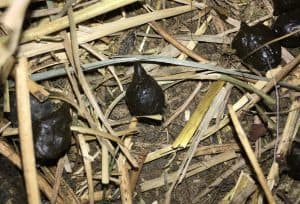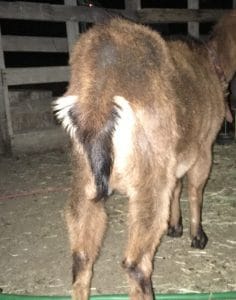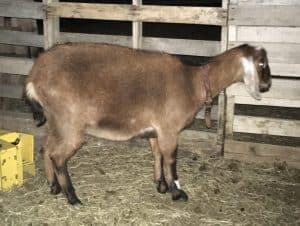Let’s talk below about Ketosis in goats and how to prevent this condition, the symptoms, and the treatment. It is preventable and you can help your goat avoid it. This is one post in our Raising Goats series.
Although I worked in an Alzheimer’s home in Boise when I was going to school, I can’t say that I had or gained a passion for the medical side of life. Truly, it was a wonderful experience working with and helping the residents but it wouldn’t become a long-term profession.
So, when I first heard the word “ketosis”, I said, “huh??”
But it is an important term to know when you are dealing with goats who have recently kidded and their health.
As a goat owner, it is your primary responsibility to provide your goats with adequate nutrition so that you never have to work on the treatment side of these problematic conditions.
Let’s start off by answering the question:
What is ketosis in goats?
- It is a metabolic condition after kidding
- Ketosis is a metabolic problem caused by an animal living on its own body reserves because it has stopped eating food. The higher nutritional needs of a doe continue as they did in the last weeks of her pregnancy because now she is producing large quantities of milk. So a doe in the early stages of lactation may experience a net loss of energy. Usually, four to six weeks after kidding, the doe’s hormonal stimuli for lactation overcomes the effects of inadequate food intake.
You can find a lot of articles here on A Life of Heritage that will teach you about goat care and be sure to check out The Goat Health, and Information Bundle–it’s full of to-do lists, checklists, record keeping sheets, and resource pages that will get your new (or old) goat herd off to a terrific start!
Goat Essential ↓
Goat Management Binder
You are organized. You are knowledgeable. You are proactive. This is how. Click below to get this binder in your hands to avoid common errors that affect your goat's health. These records are your freedom and your goat's optimal health.
Ketosis in goats can be a very detrimental condition for your herd. What else do you need to know about this condition?
• Prevention is key:
• Never should the doe be excessively fat.
• Any changes in diet should be introduced slowly. The addition of protein grain concentrate not only is important for the health of the doe and kid during pregnancy but for the health of the goat as she begins lactating.
• Allow the goat to eat as much as she needs of good quality hay
• Symptoms to watch for:
• In its mildest form does will have irregular milk production and days of inactivity.
• In its severest form, there will be a decrease in appetite and milk production along with a rapid loss in condition. Her droppings will be hard and will tend to have pointed ends, like in the picture provided below. She may seem depressed and may show signs of abdominal pain. There may even be a “sweet corn” (acetone) smell on her breath or in the milk.

• A drooping tail and depressed look also indicate a sick goat:


-
Treatment:
- The treatment for ketosis will generally be the same as for pregnancy toxemia: correct the does energy balance as quickly as possible through direct energy supplementation.
•Treatment for “Pregnancy Toxemia”
•What You Need to Know About Nutrition During all the Stages of a Goat’s Pregnancy
As you can see, nutrition is key. It can’t be said any simpler than that.
You can read more about ketosis in goats here and here. Happy learning!
If you are on a journey to self-sufficiency, you may be interested in our free resource page for homesteaders. It is password protected and updated weekly. So take a moment and sign up below. You will receive an email shortly and will be able to download and print all the helpful resources. 🙂
Seriously, our free resource page is worth looking into. It has a great selection of tips, and checklists that have helped me out greatly. This page is password protected and is updated almost weekly! How much better can it get?? 😉 Sign up below! Happy learning!
Get access to 50+ resources to help you gain confidence, save time, stay organized, and restore hope. Your password-protected page will be updated on an almost weekly basis and weekly emails from A Life of Heritage will keep you in the know. 🙂 We want to bless YOU with this information!
All you have to do is:
- Sign up below
- Find your confirmation email (in inbox or junk/spam folder) and confirm subscription
- The Welcome email will hold all the details and password for logging in to your resource page
- Add [email protected] to your contacts to ensure that you receive future emails and updates to our resource page
I also would love to know what would help you. What can we add to our resource page to make your life that much easier? Email me your ideas: [email protected]
If you would like a sneak peek into our resource page:
Free Resource Page for Horse Owners
Free Resource Page for Homesteaders
Free Resource Page for God Seeker
I am not a doctor or a veterinarian. The information herein is my opinion only and is not meant to replace professional, veterinary, or medical opinion. Any products mentioned here are not intended to diagnose, treat, prevent, or cure any disease. Statements made on this blog have not been evaluated by the FDA.


